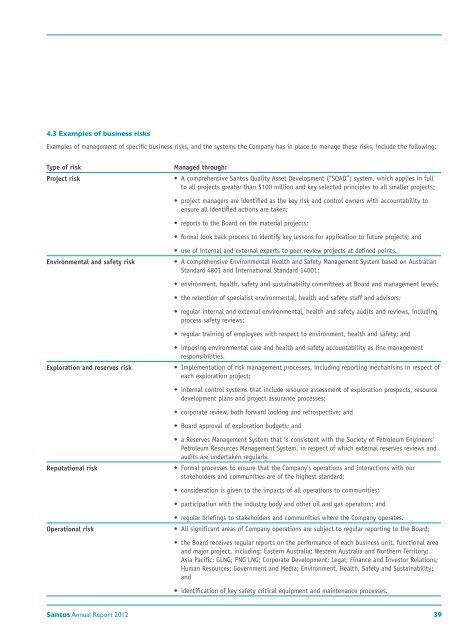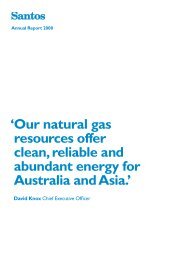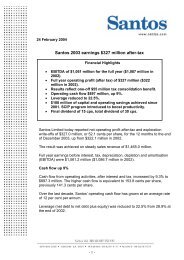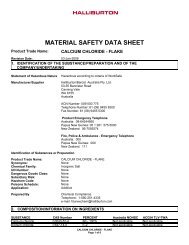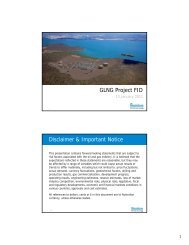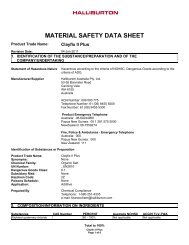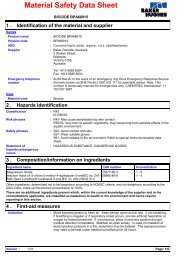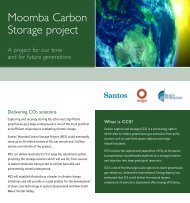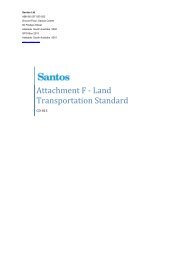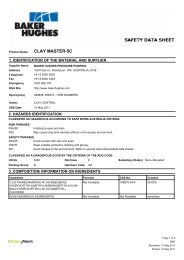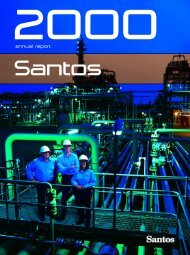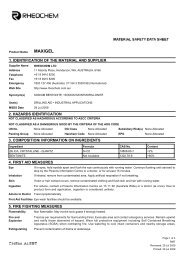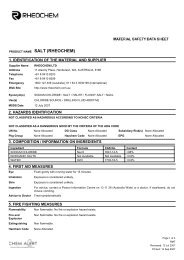Commentary - Santos
Commentary - Santos
Commentary - Santos
You also want an ePaper? Increase the reach of your titles
YUMPU automatically turns print PDFs into web optimized ePapers that Google loves.
4.3 Examples of business risks<br />
Examples of management of specific business risks, and the systems the Company has in place to manage these risks, include the following:<br />
Type of risk<br />
Project risk<br />
Managed through:<br />
• A comprehensive <strong>Santos</strong> Quality Asset Development (“SQAD”) system, which applies in full<br />
to all projects greater than $100 million and key selected principles to all smaller projects;<br />
• project managers are identified as the key risk and control owners with accountability to<br />
ensure all identified actions are taken;<br />
• reports to the Board on the material projects;<br />
• formal look back process to identify key lessons for application to future projects; and<br />
Environmental and safety risk<br />
• use of internal and external experts to peer review projects at defined points.<br />
• A comprehensive Environmental Health and Safety Management System based on Australian<br />
Standard 4801 and International Standard 14001;<br />
• environment, health, safety and sustainability committees at Board and management levels;<br />
• the retention of specialist environmental, health and safety staff and advisors;<br />
• regular internal and external environmental, health and safety audits and reviews, including<br />
process safety reviews;<br />
• regular training of employees with respect to environment, health and safety; and<br />
Exploration and reserves risk<br />
• imposing environmental care and health and safety accountability as line management<br />
responsibilities.<br />
• Implementation of risk management processes, including reporting mechanisms in respect of<br />
each exploration project;<br />
• internal control systems that include resource assessment of exploration prospects, resource<br />
development plans and project assurance processes;<br />
• corporate review, both forward looking and retrospective; and<br />
• Board approval of exploration budgets; and<br />
Reputational risk<br />
• a Reserves Management System that is consistent with the Society of Petroleum Engineers’<br />
Petroleum Resources Management System, in respect of which external reserves reviews and<br />
audits are undertaken regularly.<br />
• Formal processes to ensure that the Company’s operations and interactions with our<br />
stakeholders and communities are of the highest standard;<br />
• consideration is given to the impacts of all operations to communities;<br />
• participation with the industry body and other oil and gas operators; and<br />
Operational risk<br />
• regular briefings to stakeholders and communities where the Company operates.<br />
• All significant areas of Company operations are subject to regular reporting to the Board;<br />
• the Board receives regular reports on the performance of each business unit, functional area<br />
and major project, including: Eastern Australia; Western Australia and Northern Territory;<br />
Asia Pacific; GLNG; PNG LNG; Corporate Development; Legal; Finance and Investor Relations;<br />
Human Resources; Government and Media; Environment, Health, Safety and Sustainability;<br />
and<br />
• identification of key safety critical equipment and maintenance processes.<br />
<strong>Santos</strong> Annual Report 2012 39


